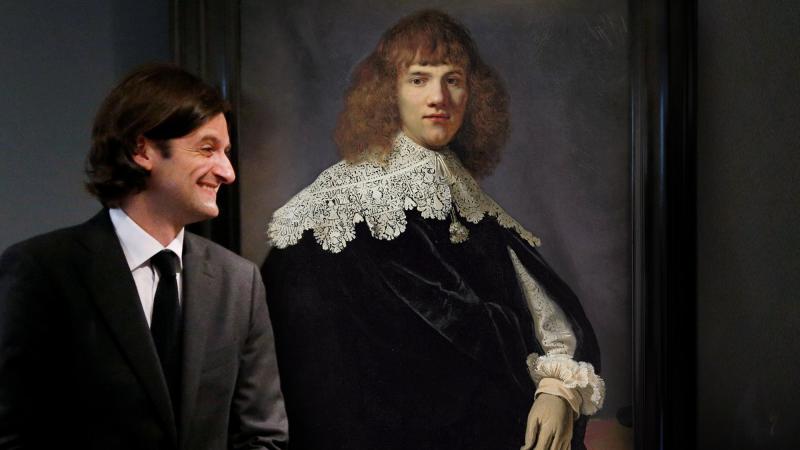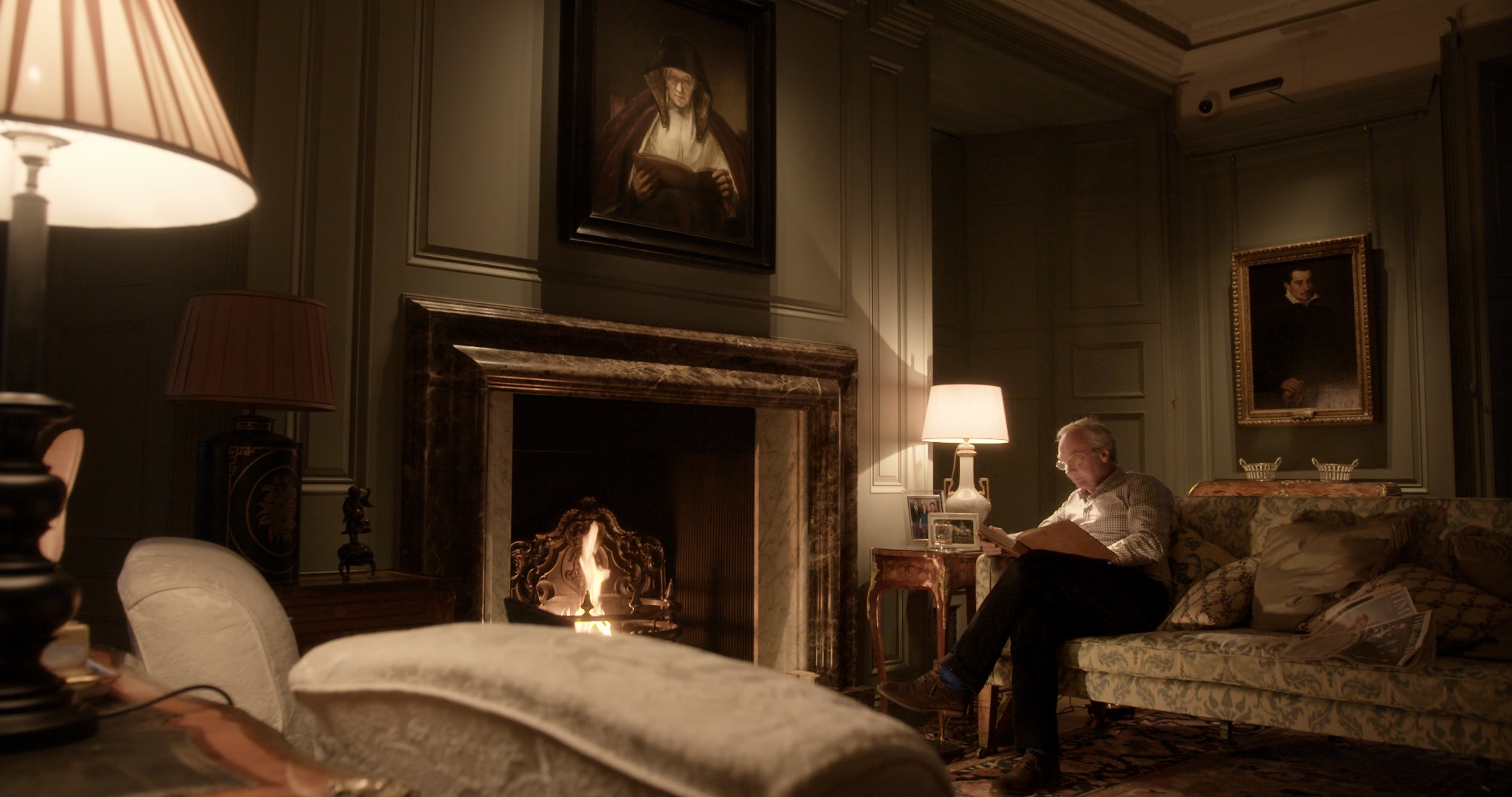My Rembrandt review - hard cash and hubris | reviews, news & interviews
My Rembrandt review - hard cash and hubris
My Rembrandt review - hard cash and hubris
Characters historical and contemporary mingle in an entertaining portrait of the art world

In the gloomy splendour of Drumlanrig Castle in Dumfriesshire, the 10th Duke of Buccleuch gazes up at Rembrandt’s Old Woman Reading, 1655. The painting has belonged to the Scott family for more than 250 years, and like generations before him, the duke has known it all his life.
It is a statement of spine-tingling acuity, hinting at the peculiar magic that hangs like a charm around Rembrandt's paintings, and leaves its mark on this documentary by Oeke Hoogendijk, which follows on from her 2014 film The New Rijksmuseum. In a series of deft portraits, she delves into the world of collectors, museum directors, dealers and art historians, all in different ways obsessed with Rembrandt. In her exploration of the relationships between Rembrandt’s paintings and the people who want or have them, she weaves a tale of fathers and sons, money and privilege, pride and envy, gradually revealing the central protagonists to us in the process.
The Duke’s relationship with his Rembrandt is unselfconsciously tender (pictured below), and his reflections, which are as much about the old woman in the picture as the hand that made her, are a gentle intimation of the ferocious passions so readily stirred up by great paintings. Used as we are to seeing paintings in museums, it is easy to forget that for a few, paintings are daily companions. For Jan Six, an Amsterdam dealer in Old Master paintings, the weight of the past is hard to escape, measured out as it is in the hundreds of painted portraits that fill the family home. As the 11th Jan Six he is a direct descendant of Jan Six I, a wealthy collector whose portrait, painted by his friend Rembrandt in 1654, is one of the most celebrated paintings of all time.
For Jan Six, an Amsterdam dealer in Old Master paintings, the weight of the past is hard to escape, measured out as it is in the hundreds of painted portraits that fill the family home. As the 11th Jan Six he is a direct descendant of Jan Six I, a wealthy collector whose portrait, painted by his friend Rembrandt in 1654, is one of the most celebrated paintings of all time.
Six’s battle with the weight of expectation that comes with such a family history is almost Shakespearean, his connoisseur’s eye a family trait that for him may prove a curse as much as a blessing. Locked in a barely contained battle of wills and ideals with his father, his description of Rembrandt and his son Titus is as heartfelt and perceptive as his reflections on his own father-son relationship.
In his quest to escape the grip of the family name, and to prove himself on his own terms, Six sniffs out two apparently forgotten Rembrandts, which he quietly snaps up for a song. His personal journey to authenticate the Portrait of an Unknown Gentleman (main picture) is a cautionary tale of hubris and ambition, and in establishing the painting as a Rembrandt, he reveals his own, less attractive nature, culminating in accusations of cheating and a bitter falling out with elderly Rembrandt scholar Ernst van de Wetering.
For Taco Dibbits, the current general director of the Rijksmuseum, the Old Woman Reading is a painting that he can only dream of acquiring: “When you see this painting,” he says, “you fall in love on the spot.” Invited to Scotland to help the Duke rehang the painting, Dibbits’ better instincts prevail and he sets about helping the duke find a cosier, more intimate location for the portrait, where it can be “part of the family”.
Dibbits’ hilariously ruthless streak soon reveals itself though, as we follow him on a “secret mission” to Baron Eric de Rothschild in Paris, whose 1634 portraits of husband and wife Marten Soolmans and Oopjen Coppit, the only full-length, lifesize portraits Rembrandt ever painted, need to be sold in order to pay what, with a price tag of €160 million, surely has to be the mother of all tax bills. Dibbits and then general director Wim Pijbes make a fine double act in a superbly cut back-and-forth with Jean-Luc Martinez of the Louvre, in a lively retelling – dripping with acrimony – of the diplomatic row that ensued as both museums set about trying to acquire the paintings.
It is an entertaining and beautifully crafted film, whose success can be measured in the food for thought it provides. Among its cast of dealers and scholars, wealthy landowners and arriviste collectors, few are entirely beyond reproach, and yet all have significant redeeming features, their passion for Rembrandt bringing out, perhaps the best, and certainly the worst in their characters.
rating
Explore topics
Share this article
The future of Arts Journalism
You can stop theartsdesk.com closing!
We urgently need financing to survive. Our fundraising drive has thus far raised £49,000 but we need to reach £100,000 or we will be forced to close. Please contribute here: https://gofund.me/c3f6033d
And if you can forward this information to anyone who might assist, we’d be grateful.

Subscribe to theartsdesk.com
Thank you for continuing to read our work on theartsdesk.com. For unlimited access to every article in its entirety, including our archive of more than 15,000 pieces, we're asking for £5 per month or £40 per year. We feel it's a very good deal, and hope you do too.
To take a subscription now simply click here.
And if you're looking for that extra gift for a friend or family member, why not treat them to a theartsdesk.com gift subscription?

Add comment